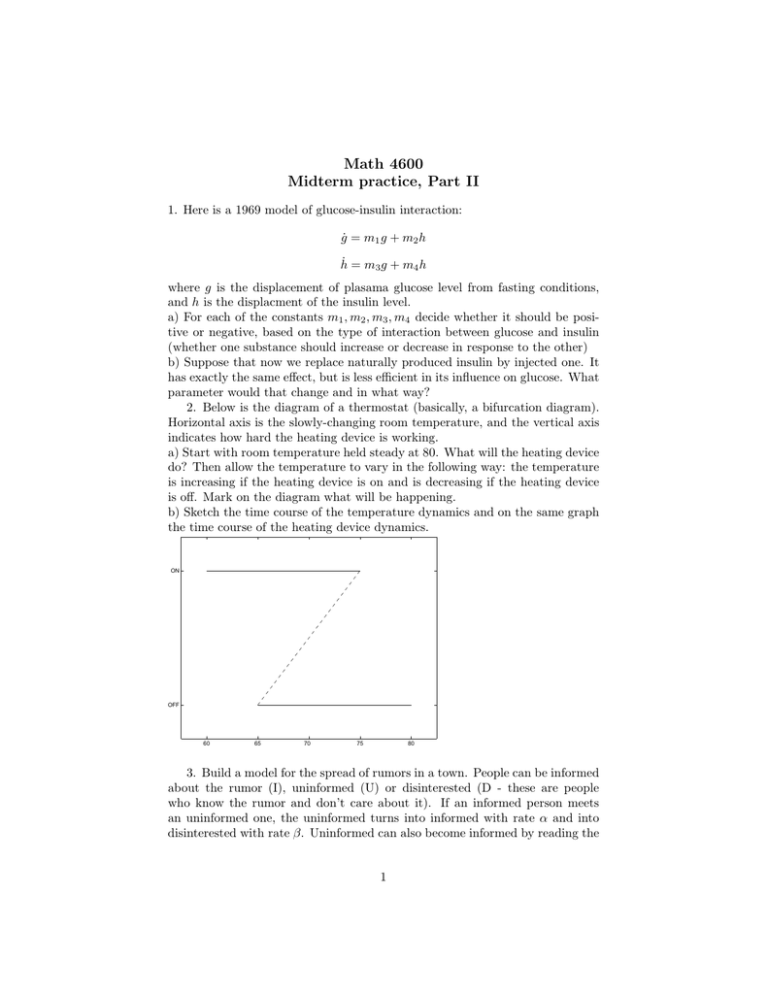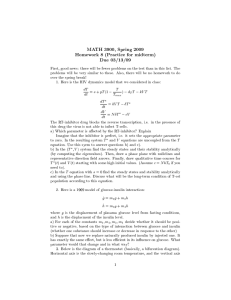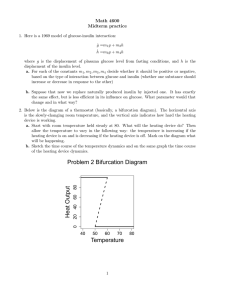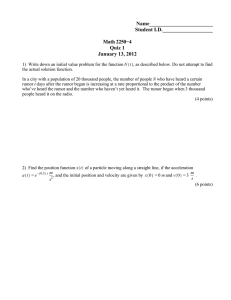Math 4600 Midterm practice, Part II
advertisement

Math 4600 Midterm practice, Part II 1. Here is a 1969 model of glucose-insulin interaction: ġ = m1 g + m2 h ḣ = m3 g + m4 h where g is the displacement of plasama glucose level from fasting conditions, and h is the displacment of the insulin level. a) For each of the constants m1 , m2 , m3 , m4 decide whether it should be positive or negative, based on the type of interaction between glucose and insulin (whether one substance should increase or decrease in response to the other) b) Suppose that now we replace naturally produced insulin by injected one. It has exactly the same effect, but is less efficient in its influence on glucose. What parameter would that change and in what way? 2. Below is the diagram of a thermostat (basically, a bifurcation diagram). Horizontal axis is the slowly-changing room temperature, and the vertical axis indicates how hard the heating device is working. a) Start with room temperature held steady at 80. What will the heating device do? Then allow the temperature to vary in the following way: the temperature is increasing if the heating device is on and is decreasing if the heating device is off. Mark on the diagram what will be happening. b) Sketch the time course of the temperature dynamics and on the same graph the time course of the heating device dynamics. ON OFF 60 65 70 75 80 3. Build a model for the spread of rumors in a town. People can be informed about the rumor (I), uninformed (U) or disinterested (D - these are people who know the rumor and don’t care about it). If an informed person meets an uninformed one, the uninformed turns into informed with rate α and into disinterested with rate β. Uninformed can also become informed by reading the 1 local newspaper, this happens with rate δ. Informed people become disinterested at rate γ. Write equations for the dynamics of rumor spread. What will be the outcome for a town with population of size P ? (hint: find steady states and their stability. However, after you write the equations and before you do anything to them, reduce the system to 2 equations, using the total town population size P.) 4. Draw a schematic of the (periodic) arterial pulse. Describe what the heart is doing during each phase of the pulse in terms of heart valves opening and closing, and heart chambers volume. 2






